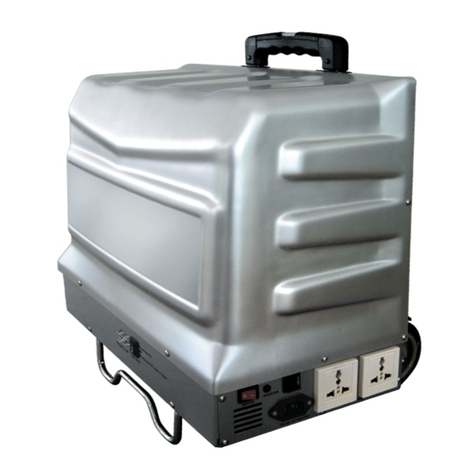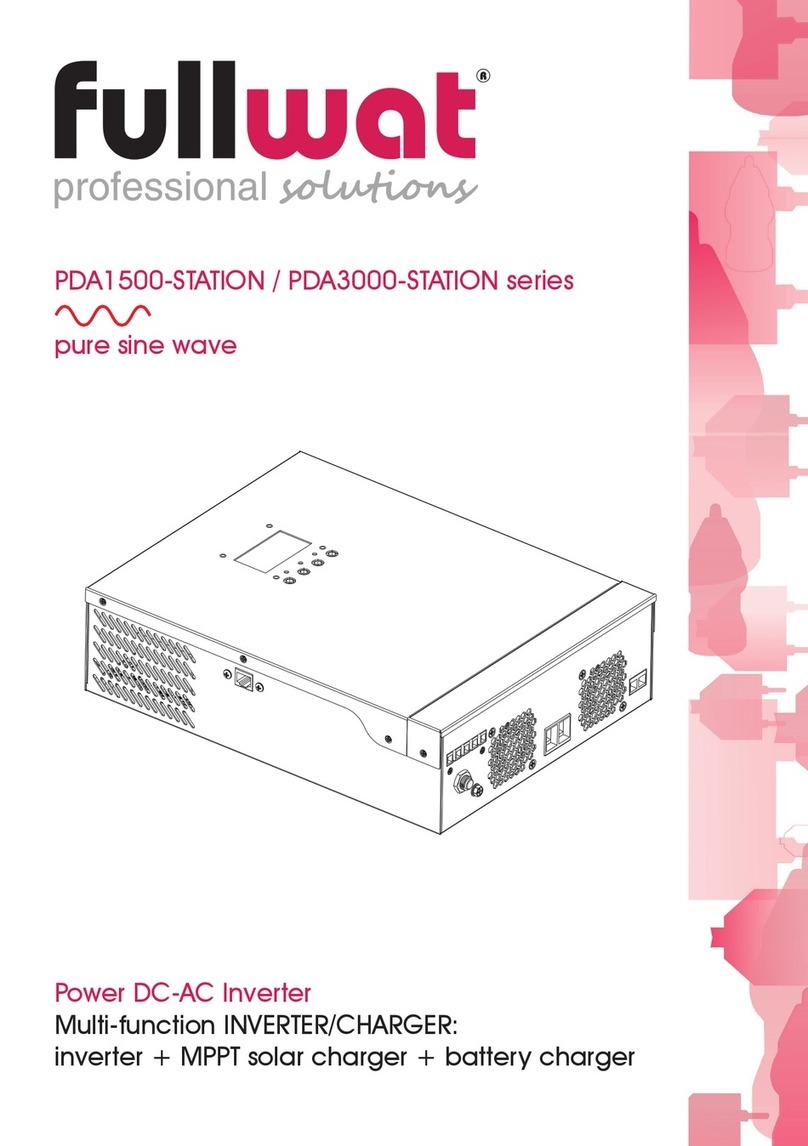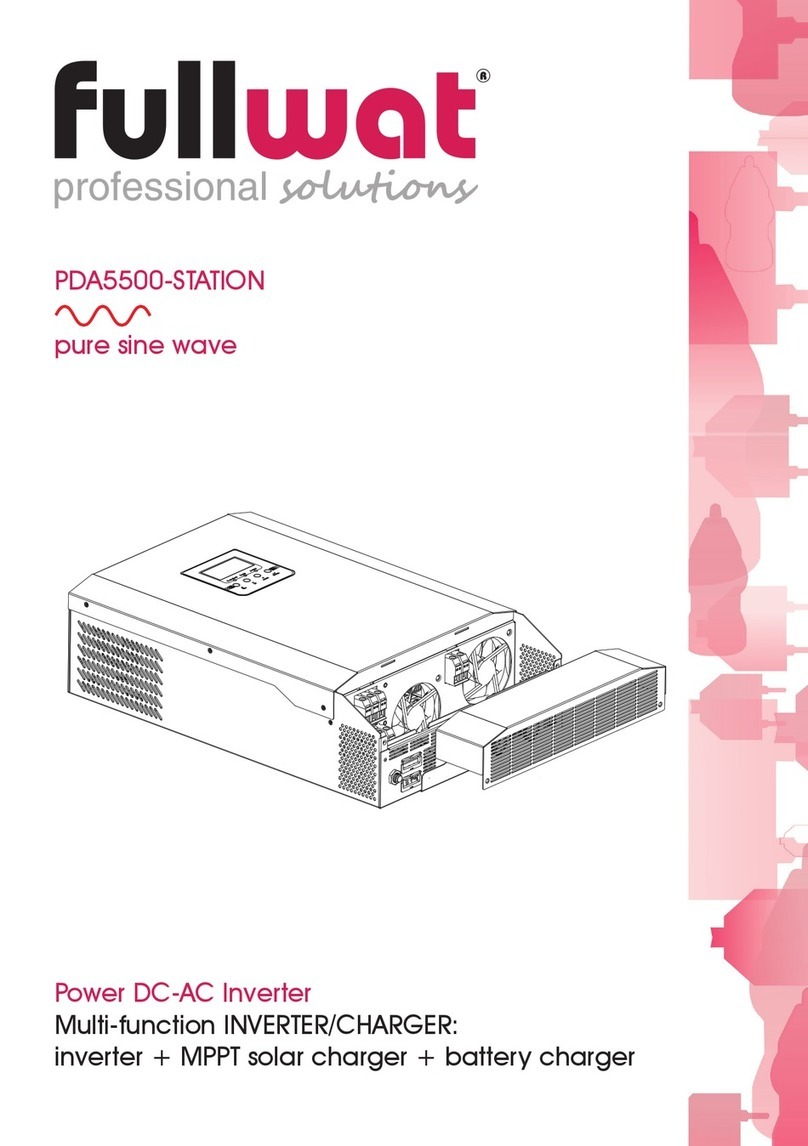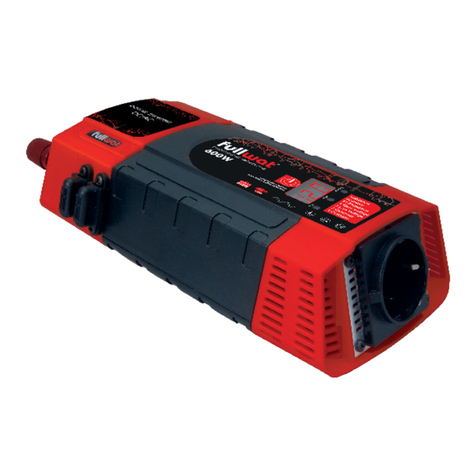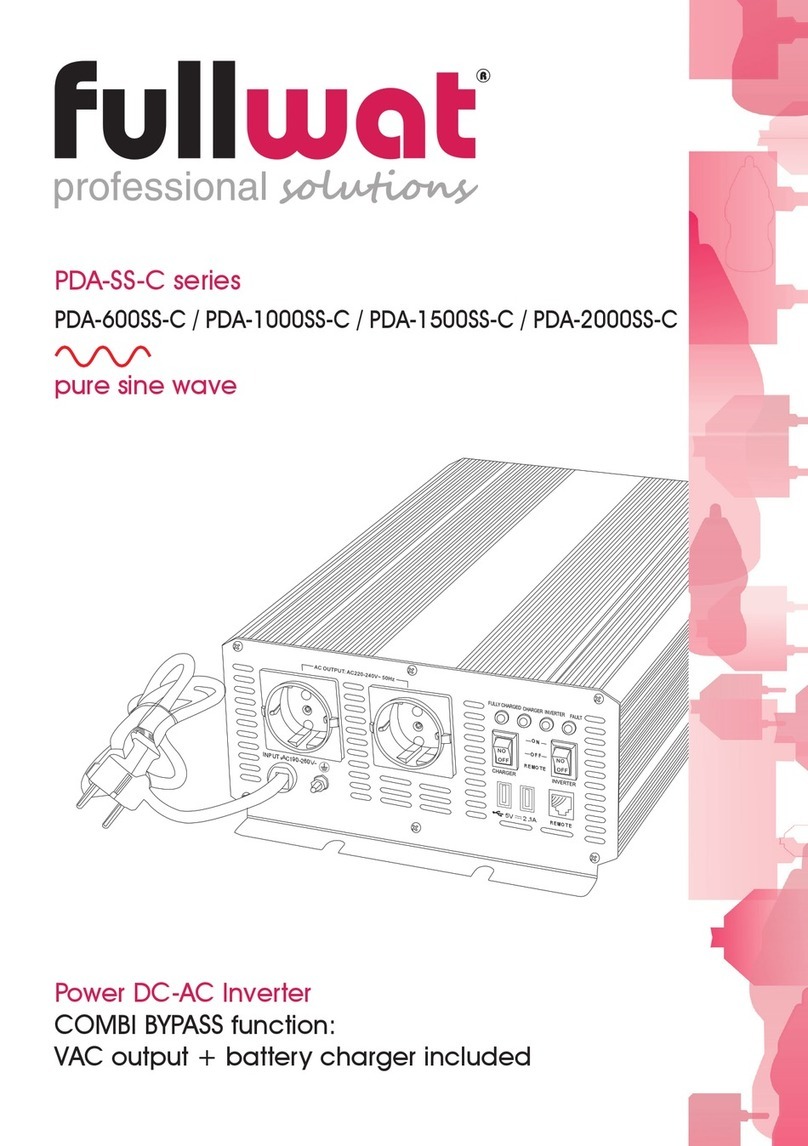
- 4 -
Precaución
Antes de efectuar ninguna conexión, asegúrese de que el inversor esté apagado.
4. TOMA DE SALIDA USB
Conecte un dispositivo externo USB al puerto USB y enciéndalo.
La salida USB de este inversor de corriente
proporciona una fuente de alimentación de 5
VDC para dispositivos externos USB (por ejemplo,
luces, ventiladores, radios).
La salida USB se enciende permanentemente
cuando el inversor de corriente está conectado a
un voltaje de entrada de 12V.
Advertencia
La salida USB del inversor de corriente no está diseñada para transferir datos.
No conecte tarjetas de memoria, reproductores de MP3 o dispositivos externos de
almacenamiento de datos similares.
¡No conecte ningún cable de transferencia de datos al puerto USB!
5. CONEXIÓN DE EQUIPOS
La mayoría de las herramientas eléctricas, electrodomésticos y equipos de audio / video tienen
una etiqueta que indica el consumo de energía en amperios (A) o vatios (W). La potencia total
del equipo conectado debe ser inferior a la potencia nominal del inversor. Si el consumo de
energía se clasifica en amperios, multiplíquelos por el voltaje de corriente alterna (110 / 220V)
para determinar la potencia. Por ejemplo, una televisión clasificada en 1 amperio con un
voltaje de 220V consumirá 220 vatios.
Las cargas resistivas, como las luces incandescentes, son las más fáciles para el inversor, pero
las cargas resistivas más grandes, como estufas o calentadores eléctricos, pueden requerir
más energía que la que puede suministrar este inversor. Las cargas inductivas, como los
televisores y los reproductores de audio (cualquier dispositivo con un transformador) requieren
más corriente para funcionar que una carga resistiva de la misma potencia. Los motores de
inducción y algunos televisores pueden necesitar de 2 a 6 veces su potencia nominal para
arrancar. Dichos dispositivos pueden requerir el encendido repetido de la energía del inversor
ON / OFF para comenzar. Los más exigentes son aquellos dispositivos que arrancan en carga,
es decir, compresores y bombas. Dado que las características eléctricas de los equipos
conectados varían ampliamente, es posible que deba intentar averiguar si se puede iniciar y
cuánto tiempo puede funcionar.
Figura 1
Figura 2
Conexión del inversor directamente a la batería
Figura 1 - Afloje los tornillos de los terminales y deslice
los conectores del cable entre la tapa y la
base. Luego apriete firmemente.
Figura 2 - Abra las pinzas de cocodrilo y luego
conéctelas a los terminales adecuados de
la batería.
Conecte la pinza de cocodrilo roja al
terminal positivo (+) de la batería y la pinza
de cocodrilo negra al terminal negativo (-)
de la batería.
F
A
U
L
T
P
O
W
E
R
O
FF
N
O
